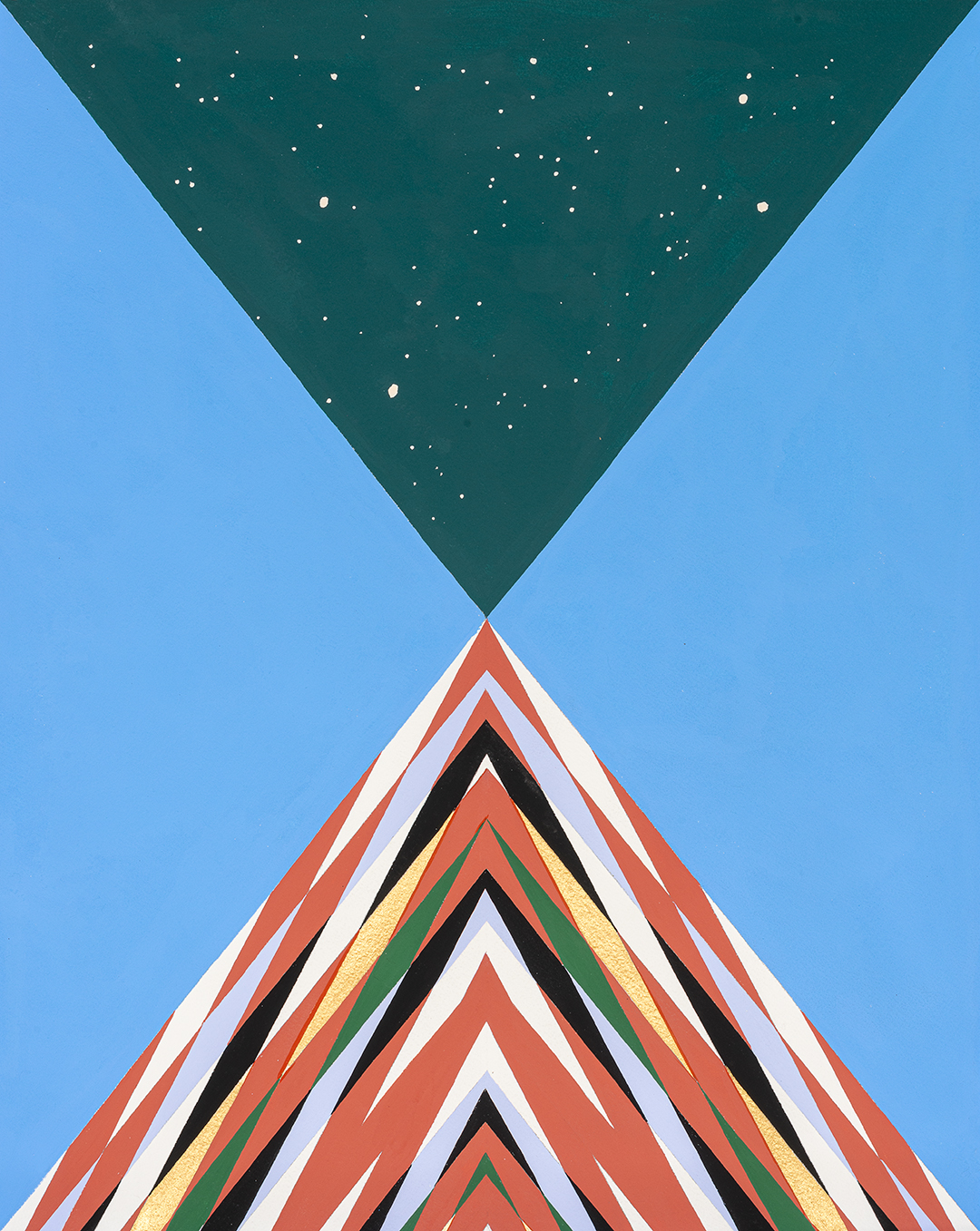Carlson’s Future Cache highlights tribe’s history and federal reaffirmation effort
Andrea Carlson’s Future Cache, on view through June 1, 2024, addresses a painful history, and one its host, the University of Michigan Museum of Art in Ann Arbor, is inextricably connected to: the university owns large tracts of ancestral homeland of the exhibition’s subject (and project partner) the Burt Lake Band of Ottawa and Chippewa Indians.

gouache on paper
photo courtesy the University of Michigan Museum of Art
For LSA Magazine, published by the University of Michigan College of Literature, Science, and the Arts, Kashona Notah-Stevens (Iñupiaq) describes—using a featured Carlson work on paper—the day the band lost its homeland:
The points of two triangles meet at the center of the painting. The bottom one depicts an Assomption Sash, a colorful finger-woven sash often used in contemporary Native regalia. The top triangle shows stars in the sky—but not just any stars, and not just any sky. This was the sky as it looked in the early morning hours of October 15, 1900, the day the Burt Lake Band of Ottawa and Chippewa Indians were forcibly removed from their land in northern Michigan and lost their rights as a sovereign nation.
The stars form the same constellations that tribal members might have looked up at, unaware that their lives would soon change forever, unaware that they would soon be driven from their homes. Later called the Burt Lake Burn-Out, the forced relocation facilitated the effective termination of the Burt Lake Band as a federally recognized people. But that fateful day was not the end.
During the burn-out, a local militia illegally seized the band’s lands, burning their homes to the ground and displacing dozens of families. While recognized by the state of Michigan, the Burt Lake Band is still seeking federal recognition today, but as Notah-Stevens writes, “What is especially pernicious […] is that their bid to be recognized in 1935, through the Indian Reorganization Act, was undoubtedly tabled because they no longer owned land.”
But to borrow the title of one painting by Carlson, who belongs to the Grand Portage band of Ojibwe, “Oct. 15, 1900 IS NOT THE END.” The Burt Lake Band is looking to the future: it’s working to get federal recognition, it’s completing a healing garden and tribal office, and discussions have been sparked on campus and elsewhere about issues around sovereignty and survivance. And Carlson’s work, created in close consultation with the band and the university, has played an integral role.
“It was such an impressive piece of work,” Burt Lake Band tribal chairman Bruce Hamlin tells LSA, of Future Cache. “I was a bit blown away at first just to hear about it. The Burt Lake Band’s story has never received this kind of exposure.”